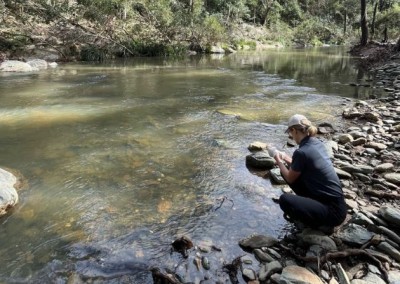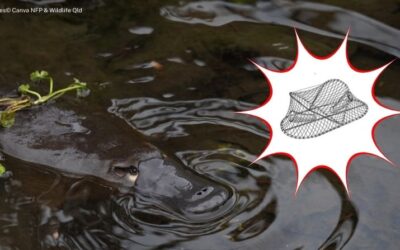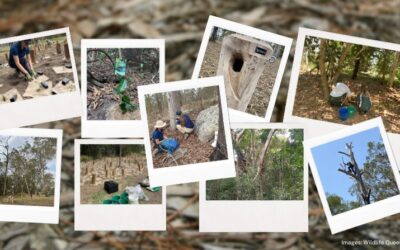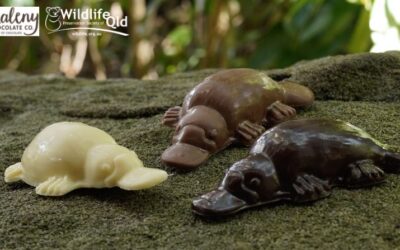PlatypusWatch
© Tamielle Brunt
The aquatic, egg-laying platypus is one of Australia’s most bizarre and iconic mammals. Unfortunately, its habitat in Queensland has shrunk by 27 per cent over 30 years, and its numbers are declining. To counteract these threats, PlatypusWatch is a community-based program that raises awareness of platypus conservation and gathers population data from Queensland waterways so researchers can identify where actions are needed — now and in the future — to protect this very special monotreme.
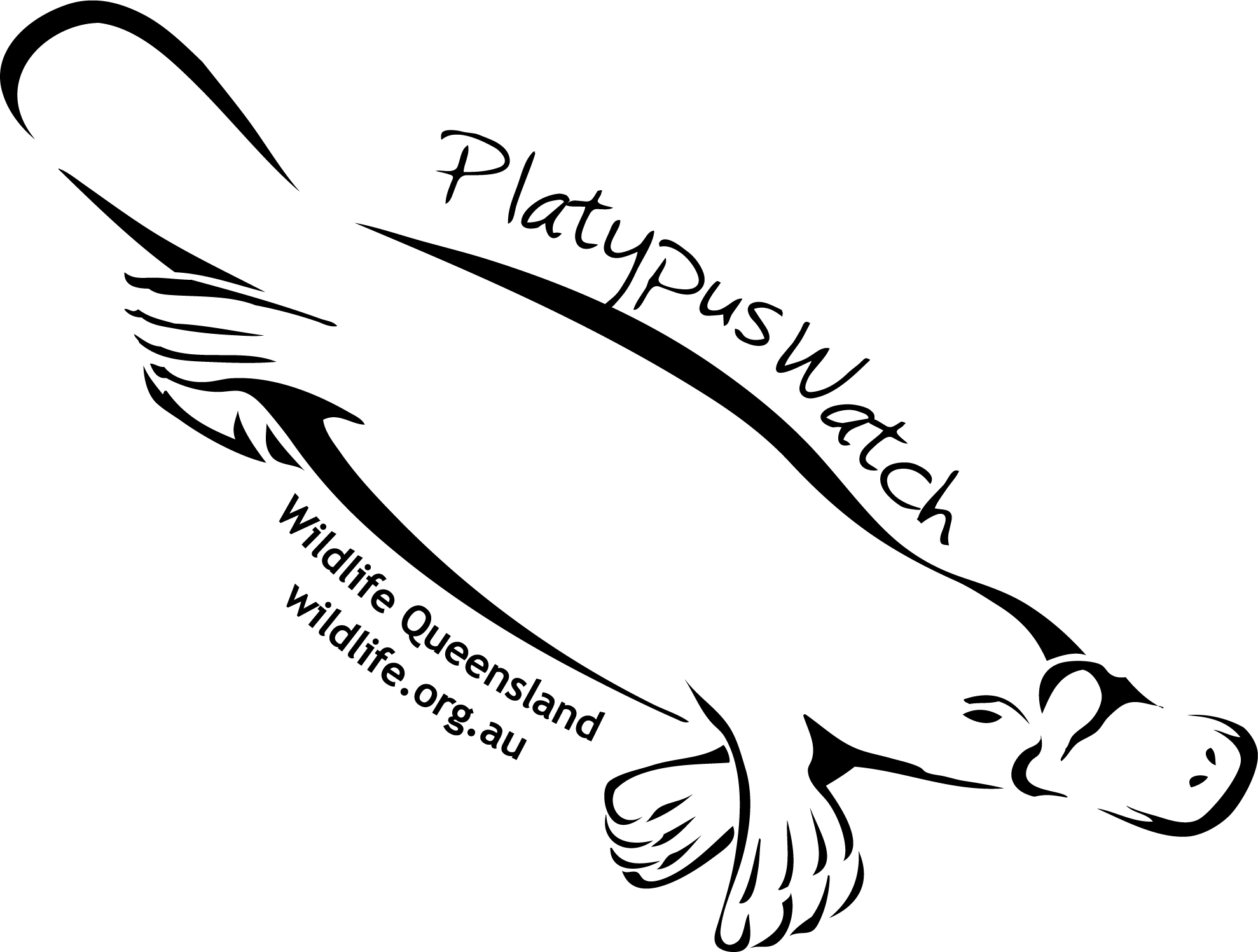
sites sampled each year
dollars to sample each site
Our aims
Formed in 2003, PlatypusWatch is a central hub for coordinating research into this fascinating species.
In 2016, Wildlife Queensland launched PlatyCount — the first statewide platypus distribution census since 2001.
Our Platypus eDNA Project also began in 2016, and our researchers now use environmental DNA (eDNA) sampling of waterways along with more traditional surveying methods to document and map platypus distribution and abundance in South East Queensland.
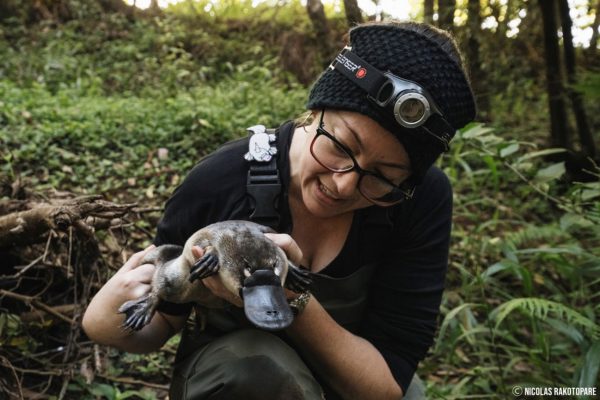 © Nicolas Rakotopare Photography
© Nicolas Rakotopare Photography
Tamielle Brunt with platypus Pollyanna. Continued monitoring and up-to-date observational records are crucial for determining fluctuations in platypus numbers and distribution over time, whether temporary or permanent.
 © Wildlife Qld
© Wildlife Qld
Tamielle Brunt assessing aquatic waterway health at a PlatypusWatch workshop.
PlatypusWatch also aims to reduce one of the biggest problems platypuses face: human ignorance. People are often unaware their actions affect wildlife living nearby. Our publications, workshops, webinars and citizen science events raise awareness of the factors that result in platypus declines, including:
- Land clearing: Removing native vegetation along freshwater waterways compromises bank stability, causing erosion and sedimentation. Platypuses need high, stable banks to build burrows for nesting sites.
- Water use (irrigation, dams, weirs): Disconnected or dried-up river systems force platypuses to travel over land to find another water source in which to feed, mate and shelter. This puts them at risk of entanglement, predation and displacement.
- Water pollution: Pollution decreases the number of aquatic insect larvae, which are sensitive to changes in water parameters and are the platypus’s main food source, forcing platypuses to seek food elsewhere.
- Predation: Unrestrained pets and wild dogs can attack platypuses or destroy their burrows if they are allowed to roam riverbanks and creeks.
- Litter entanglement: Abandoned fishing line and circular litter — such as hairbands, rubber bands and soft plastics — can ensnare platypuses and result in death. Always snip circular rubbish before disposing of it thoughtfully.
- Drowning in enclosed (opera house) yabby traps: Platypuses need to surface to breathe air. Traps that enable entry but block any exist quickly drown platypuses and other aquatic mammals such as rakali.
Ongoing activities
PlatypusWatch projects complement our ongoing efforts to conserve the platypus, including:
- mapping of the current distribution of the platypus
- revegetation of riparian flora
- supporting scientific research
- hands-on school and community projects
- educational publications.
Get involved
PlatypusWatch educational resources
Fact sheets & guides
- Platypus Rescue Steps (2023)
- PlatypusWatch in the Upper Dawson (2021)
- Platypus facts (2021)
- Happy Platypus by Tamielle Brunt (2020)
- Platypus Puzzle & Activity Book (2020) by Tamielle Brunt
- PlatypusWatch brochure (2019)
- How can we Allow Platypuses to Drown in Queensland? (2018)
- Looking Out for Platypus (2016)
Videos & webinars
PlatypusWatch webinars
- Protecting the Platypus (2020) web page. Watch webinar recording
Further reading
Websites:
- Department of Environment and Science Queensland
- NSW National Parks and Wildlife Service
- Wild Watch Australia
- Australian Platypus Conservancy
- Upper Wimmera Landcare Group, Project Platypus
- Gecko — Gold Coast and Hinterland Environment Council
- Moggill Creek Catchment Group
- Oxley Creek Catchment Association
- Pullen Pullen Catchment Group
- Save Our Waterways Now — Enoggera Creek
Mapping monotremes in Queensland
Wildlife Queensland has been working with Australian ecological research and services consultancy BioGeo to map the distribution of platypuses in Queensland. Using both observational data from the community and presence/absence data from eDNA, BioGeo is developing a model to pinpoint the habitat niche of the platypus, which helps focus conservation efforts by identifying where platypuses are likely to reside or where reintroductions would have the greatest likelihood of success.
Latest PlatypusWatch news
QLD Govt. considers ban on opera house nets: Have your say!
Fisheries Queensland is inviting feedback until 9 May 2024 from fishers and the wider community on recreational fishing reform options, including the proposed ban on opera house style nets (enclosed yabby traps).
Wildlife Queensland projects update: From elusive quolls to butterfly corridors
Wildlife Queensland project officer Hannah Thomas has been busy gathering spotted-tailed quoll data, planting platypus habitat, creating butterfly corridors, and installing greater glider hollows.
“Name the Platypus Chocolate” contest winning name revealed
Our recent “Name the Platypus Chocolate” contest, which ran from 11 to 28 September 2023, received a total of 277 entries. Maleny Chocolate Co. and Wildlife Queensland selected five shortlisted names from these entries and invited the public to cast their votes. Discover the winning name, meet our prize winners, and find out where to purchase the platypus chocolate.

